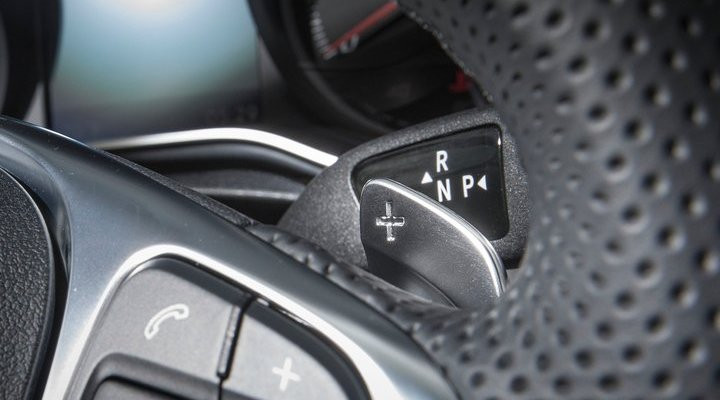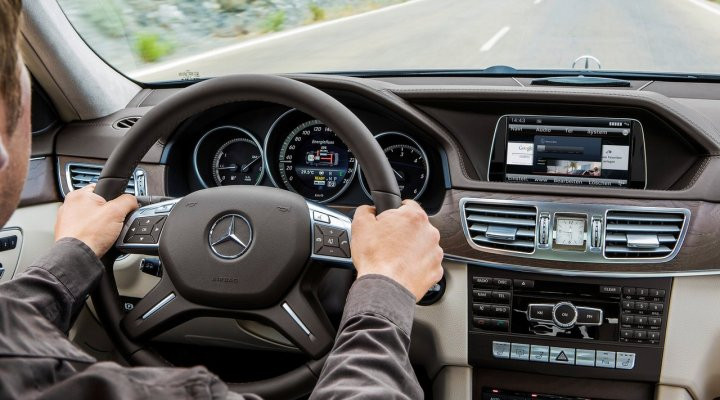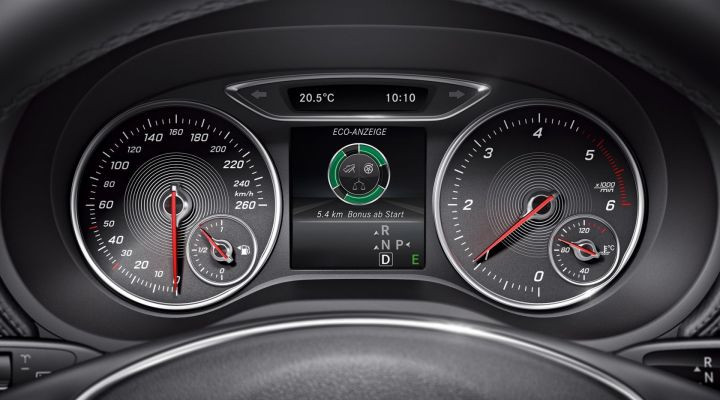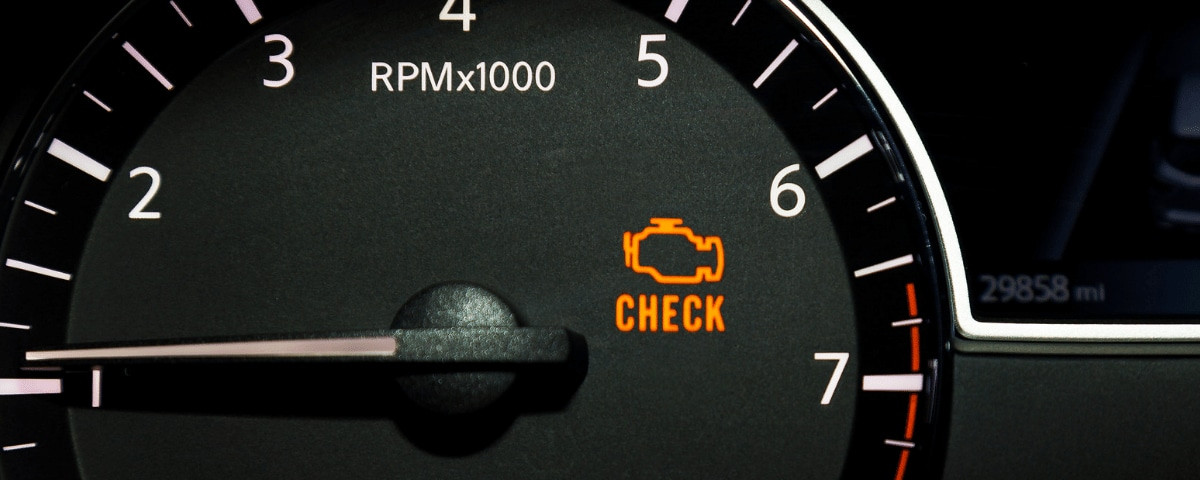Mercedes Eco Mode: Your Guide to Fuel Efficiency

Mercedes Eco Mode is your key to unlocking optimal fuel efficiency and reducing your carbon footprint. This comprehensive guide, brought to you by CARDIAGTECH.NET, dives deep into the world of Mercedes Eco Mode, exploring its functionality, benefits, and how it can enhance your driving experience. Discover how this intelligent system optimizes your vehicle’s performance, leading to significant fuel savings and a greener driving experience. Learn about related features like adaptive cruise control and energy-saving tips for your Mercedes.
1. Understanding Mercedes-Benz Eco Mode
Mercedes-Benz Eco Mode is a driver-selectable program designed to maximize fuel efficiency in your vehicle. Integrated within the DYNAMIC SELECT system, Eco Mode intelligently adjusts various vehicle parameters to promote a more economical driving style. Let’s delve into the specifics of how Eco Mode achieves this.
 Mercedes Eco Mode Activation
Mercedes Eco Mode Activation
1.1. Key Features of Eco Mode
Eco Mode manipulates several key functions to optimize fuel consumption. These adjustments are subtle yet effective, working in harmony to create a more efficient driving experience.
- Throttle Response Adjustment: Eco Mode softens the throttle response, reducing sensitivity to pedal input. This encourages smoother acceleration, minimizing wasteful bursts of power and promoting gradual speed increases, which in turn lowers fuel consumption.
- Transmission Optimization: The transmission shifts gears at lower engine speeds (RPMs) to keep the engine operating in its most efficient range. This minimizes unnecessary revving and ensures the vehicle is always using the optimal gear for fuel economy.
- Climate Control Management: Eco Mode reduces the load on the climate control system by limiting its output. This may involve slightly reducing cooling or heating power to conserve energy, but the difference is typically minimal and barely noticeable.
- Sailing Function (Inertia Mode): In vehicles equipped with automatic transmissions, Eco Mode often enables a “sailing” or inertia mode. When you lift your foot off the accelerator while coasting, the engine can decouple from the transmission, reducing engine braking and allowing the vehicle to coast freely. This minimizes fuel consumption by reducing engine drag.
1.2. DYNAMIC SELECT Integration
Eco Mode is one of several driving modes available through Mercedes-Benz’s DYNAMIC SELECT system. This system allows drivers to tailor the vehicle’s performance characteristics to their preferences and driving conditions. Other modes typically include Comfort, Sport, and Individual.
 Mercedes DYNAMIC SELECT
Mercedes DYNAMIC SELECT
Here’s a brief overview of common DYNAMIC SELECT modes:
| Mode | Description |
|---|---|
| Eco | Prioritizes fuel efficiency by adjusting throttle response, transmission shift points, and climate control. |
| Comfort | Provides a balanced driving experience with comfortable suspension settings and smooth power delivery. |
| Sport | Enhances performance with sharper throttle response, higher transmission shift points, and firmer suspension (if equipped). |
| Sport+ | Offers the most aggressive performance settings, further sharpening throttle response, raising shift points, and maximizing suspension firmness for optimal handling. |
| Individual | Allows drivers to customize various vehicle parameters, such as engine, transmission, steering, and suspension settings, to create a personalized driving experience. This may include the ability to fine-tune Eco settings. |
1.3. Activation and Deactivation
Activating Eco Mode is usually done through a physical switch or a menu option within the vehicle’s infotainment system (like MBUX). The instrument cluster typically displays a visual indicator (e.g., an “ECO” symbol) to confirm that the mode is active. Deactivating Eco Mode follows the same process, restoring the vehicle to its default settings or the previously selected driving mode.
2. Benefits of Using Eco Mode
Using Mercedes-Benz Eco Mode offers several tangible benefits, primarily centered around improved fuel efficiency and reduced environmental impact. Let’s examine these advantages in detail.
2.1. Improved Fuel Efficiency
The primary benefit of Eco Mode is its ability to significantly improve fuel efficiency. By optimizing throttle response, transmission shift points, and climate control, Eco Mode minimizes fuel consumption without drastically impacting performance.
- Quantifiable Savings: Fuel savings can vary depending on driving habits, road conditions, and vehicle model. However, studies and user reports suggest that Eco Mode can improve fuel economy by anywhere from 5% to 15%.
- Long-Term Cost Reduction: Over time, these fuel savings can add up to a substantial reduction in fuel costs, making Eco Mode a financially smart choice for drivers who prioritize efficiency.
To illustrate the potential fuel savings, consider the following example:
Assumptions:
- Vehicle: Mercedes-Benz C300
- Annual Mileage: 15,000 miles
- Fuel Price: $4.00 per gallon
- Average Fuel Economy (without Eco Mode): 25 mpg
- Fuel Economy Improvement with Eco Mode: 10%
Calculations:
- Fuel Consumption without Eco Mode: 15,000 miles / 25 mpg = 600 gallons
- Fuel Consumption with Eco Mode: 600 gallons * 0.10 = 60 gallons saved
- Annual Fuel Savings: 60 gallons * $4.00/gallon = $240
In this scenario, using Eco Mode could save you $240 per year on fuel costs.
2.2. Reduced Emissions
By reducing fuel consumption, Eco Mode also contributes to lower greenhouse gas emissions, making it an environmentally responsible choice.
- Lower Carbon Footprint: Reduced fuel consumption translates directly to lower carbon dioxide (CO2) emissions, a major contributor to climate change.
- Environmental Responsibility: Using Eco Mode demonstrates a commitment to environmental stewardship, helping to reduce your impact on the planet.
- Compliance with Regulations: In some regions, using Eco Mode may help vehicles meet stricter emissions standards and qualify for tax incentives or other benefits.
2.3. Smoother Driving Experience
While Eco Mode prioritizes efficiency, it also often results in a smoother and more relaxed driving experience.
- Gentle Acceleration: The softened throttle response encourages gradual acceleration, reducing jerky movements and enhancing passenger comfort.
- Reduced Engine Noise: Lower RPM shift points can lead to quieter engine operation, especially during city driving.
- Comfort-Oriented Settings: Eco Mode often shares settings with Comfort mode, providing a comfortable ride quality and minimizing harshness over bumps and uneven road surfaces.
3. When to Use Eco Mode
Eco Mode is versatile and can be used in various driving scenarios. However, it is particularly well-suited for certain situations where efficiency is a priority.
 Mercedes Eco Mode Highway Driving
Mercedes Eco Mode Highway Driving
3.1. Highway Driving
Highway driving, especially on long road trips, is an ideal scenario for Eco Mode. Maintaining a consistent speed on the highway allows Eco Mode to optimize fuel consumption effectively.
- Constant Speed: Eco Mode excels when maintaining a steady speed, as it can optimize transmission and throttle response for maximum efficiency.
- Sailing Function: The sailing function (inertia mode) is particularly useful on highways, allowing the vehicle to coast with minimal fuel consumption.
- Reduced Driver Fatigue: The smoother driving experience offered by Eco Mode can help reduce driver fatigue on long journeys.
3.2. City Driving
While city driving often involves frequent stops and starts, Eco Mode can still provide significant benefits in urban environments.
- Lower RPMs: Eco Mode helps keep the engine operating at lower RPMs, reducing fuel consumption during stop-and-go traffic.
- Smooth Acceleration: The softened throttle response promotes smoother acceleration, minimizing jerky movements and improving fuel economy in urban conditions.
- Reduced Emissions: City driving often leads to higher emissions, so using Eco Mode can help reduce your environmental impact in urban areas.
3.3. Everyday Commuting
For daily commutes, Eco Mode can be a practical choice, especially if your route involves a mix of highway and city driving.
- Consistent Fuel Savings: Using Eco Mode consistently throughout your commute can lead to noticeable fuel savings over time.
- Reduced Stress: The smoother driving experience can help reduce stress during congested commutes.
- Environmental Benefits: Commuting is a frequent activity, so using Eco Mode can have a significant positive impact on the environment.
3.4. Situations Where Eco Mode May Not Be Ideal
While Eco Mode is generally beneficial, there are certain situations where it may not be the best choice.
- When maximum power is needed: Eco mode reduces power. If you need to quickly accelerate or pass another vehicle, switching to a different mode may be necessary.
- Driving in hilly or mountainous terrain: In hilly or mountainous areas, Eco Mode may cause the vehicle to struggle to maintain speed, requiring more frequent downshifts and potentially reducing fuel efficiency.
- Towing or hauling heavy loads: Eco Mode is not recommended when towing or hauling heavy loads, as it may not provide sufficient power and could strain the engine and transmission.
4. The Mercedes-Benz ECO Indicator
The Mercedes-Benz ECO indicator is a visual aid designed to encourage and reward efficient driving habits. This feature provides real-time feedback on your driving style, helping you optimize your fuel economy.
 Mercedes Eco Indicator
Mercedes Eco Indicator
4.1. How the ECO Indicator Works
The ECO indicator typically consists of a graphical display on the instrument cluster that provides feedback based on three key driving parameters:
- Acceleration: This measures how smoothly and gradually you accelerate. Rapid or aggressive acceleration reduces your score.
- Consistent Speed (Homogeneous Running): This evaluates how consistently you maintain your speed. Frequent speed changes or erratic driving patterns lower your score.
- Coasting (Riding Without Traction): This rewards anticipation and coasting. Driving without pressing the accelerator or brake, allowing the vehicle to coast, increases your score.
4.2. Interpreting the ECO Indicator
The ECO indicator usually displays a visual representation of your driving efficiency, such as a bar graph or a sphere that fills up as you drive more efficiently.
- Full Indicator: A fully filled indicator signifies that you are driving in an extremely efficient manner, maximizing fuel economy.
- Partial Indicator: A partially filled indicator indicates that there is room for improvement in your driving habits.
- Low Indicator: A low or empty indicator suggests that your driving style is not conducive to fuel efficiency.
4.3. Maximizing Your ECO Score
To maximize your ECO score and achieve optimal fuel efficiency, focus on the following driving techniques:
- Accelerate gradually: Avoid rapid or aggressive acceleration.
- Maintain a consistent speed: Minimize speed changes and erratic driving patterns.
- Anticipate traffic: Look ahead and anticipate traffic conditions, allowing you to coast and avoid unnecessary braking.
- Use cruise control: Cruise control can help maintain a consistent speed on highways, maximizing fuel efficiency.
5. Optimizing Fuel Efficiency Beyond Eco Mode
While Eco Mode is a valuable tool, several other factors can influence your vehicle’s fuel efficiency. By adopting these practices, you can further enhance your fuel economy.
5.1. Tire Inflation
Maintaining proper tire inflation is crucial for fuel efficiency. Underinflated tires increase rolling resistance, requiring the engine to work harder and consume more fuel.
- Check Tire Pressure Regularly: Check your tire pressure at least once a month and before long trips.
- Follow Manufacturer Recommendations: Inflate your tires to the pressure recommended in your vehicle’s owner’s manual or on the sticker located on the driver’s side doorjamb.
- Use a Tire Pressure Gauge: Invest in a reliable tire pressure gauge to ensure accurate readings.
5.2. Regular Maintenance
Regular maintenance is essential for maintaining optimal fuel efficiency. Neglecting maintenance can lead to decreased performance and increased fuel consumption.
- Oil Changes: Follow the manufacturer’s recommended oil change intervals. Using the correct type of oil can also improve fuel economy.
- Air Filter Replacement: Replace the air filter regularly to ensure proper airflow to the engine.
- Spark Plug Replacement: Replace spark plugs as recommended to maintain optimal combustion efficiency.
- Wheel Alignment: Ensure your wheels are properly aligned to minimize rolling resistance.
5.3. Driving Habits
Your driving habits have a significant impact on fuel efficiency. Adopting fuel-efficient driving techniques can make a noticeable difference.
- Avoid Aggressive Driving: Minimize rapid acceleration, hard braking, and high speeds.
- Use Cruise Control: Cruise control helps maintain a consistent speed on highways, maximizing fuel efficiency.
- Anticipate Traffic: Look ahead and anticipate traffic conditions, allowing you to coast and avoid unnecessary braking.
- Reduce Idling: Avoid idling for extended periods, as it wastes fuel. If you anticipate a long wait, turn off the engine.
- Minimize Cargo Weight: Reduce unnecessary weight in your vehicle, as it can decrease fuel efficiency.
5.4. Aerodynamics
Aerodynamics play a role in fuel efficiency, especially at higher speeds. Minimizing aerodynamic drag can improve fuel economy.
- Remove Roof Racks When Not in Use: Roof racks and cargo carriers increase aerodynamic drag, reducing fuel efficiency. Remove them when they are not needed.
- Close Windows at High Speeds: Open windows increase aerodynamic drag, especially at highway speeds.
- Consider Aerodynamic Modifications: Certain aerodynamic modifications, such as rear spoilers or side skirts, can improve fuel efficiency, but they should be chosen carefully to ensure they are effective.
6. Eco Mode and Electric Vehicles (EVs)
Eco Mode is also available in Mercedes-Benz electric vehicles (EVs), but it functions slightly differently compared to gasoline-powered vehicles.
6.1. Eco Mode in EVs
In EVs, Eco Mode primarily focuses on optimizing energy consumption to maximize driving range.
- Reduced Acceleration: Eco Mode softens the accelerator pedal response to encourage slower, more energy-efficient acceleration.
- Regenerative Braking: Eco Mode may increase the intensity of regenerative braking, capturing more energy when decelerating and sending it back to the battery.
- Climate Control Management: Eco Mode reduces the energy consumption of the climate control system, limiting heating and cooling power to conserve battery life.
- Speed Limiter: Some EVs may have a speed limiter in Eco Mode to further reduce energy consumption at higher speeds.
6.2. Benefits of Eco Mode in EVs
Using Eco Mode in an EV offers several benefits:
- Increased Range: The primary benefit is an increase in driving range, allowing you to travel farther on a single charge.
- Energy Savings: Eco Mode helps conserve battery power, reducing your energy costs and environmental impact.
- Smoother Driving: The softened accelerator pedal response can provide a smoother and more relaxed driving experience.
6.3. Tips for Maximizing Range in EVs
In addition to using Eco Mode, here are some tips for maximizing range in your Mercedes-Benz EV:
- Precondition the Cabin: Precondition the cabin while the vehicle is plugged in to reduce energy consumption while driving.
- Use Seat Heaters: Use seat heaters instead of the climate control system to conserve energy.
- Drive at Moderate Speeds: Higher speeds consume more energy, so driving at moderate speeds can extend your range.
- Avoid Aggressive Driving: Aggressive driving habits, such as rapid acceleration and hard braking, consume more energy and reduce range.
- Plan Your Route: Plan your route to include charging stations along the way, especially on long trips.
7. CARDIAGTECH.NET: Your Partner in Automotive Excellence
At CARDIAGTECH.NET, we understand the importance of maximizing your vehicle’s performance and efficiency. Whether you’re a seasoned automotive technician or a dedicated car enthusiast, we’re committed to providing you with the tools and knowledge you need to excel.
7.1. Diagnostic Tools for Mercedes-Benz Vehicles
CARDIAGTECH.NET offers a comprehensive range of diagnostic tools specifically designed for Mercedes-Benz vehicles. These tools allow you to:
- Read and clear diagnostic trouble codes (DTCs): Quickly identify and resolve issues with your vehicle’s systems.
- Access live data: Monitor real-time performance parameters to diagnose problems and optimize performance.
- Perform advanced functions: Perform specialized tasks such as module programming, adaptation resets, and key coding.
Our diagnostic tools are compatible with a wide range of Mercedes-Benz models, ensuring that you have the right equipment for the job.
7.2. Automotive Repair Equipment
In addition to diagnostic tools, CARDIAGTECH.NET provides a wide selection of automotive repair equipment, including:
- Scan Tools: Essential for diagnosing and troubleshooting electronic systems.
- OBD2 Scanners: Portable and user-friendly tools for reading and clearing diagnostic codes.
- Battery Testers: Evaluate battery health and diagnose charging system issues.
- Multimeters: Measure voltage, current, and resistance for electrical troubleshooting.
- Specialty Tools: A variety of specialized tools for specific repair tasks.
We source our equipment from leading manufacturers, ensuring quality, reliability, and performance.
7.3. Expert Support and Resources
At CARDIAGTECH.NET, we’re more than just a supplier of automotive tools and equipment. We’re also a valuable resource for automotive professionals and enthusiasts.
- Technical Support: Our team of experienced technicians is available to provide expert support and guidance.
- Training Resources: We offer a variety of training resources, including online courses, webinars, and workshops, to help you enhance your skills and knowledge.
- Community Forum: Connect with other automotive professionals and enthusiasts in our online community forum.
8. Frequently Asked Questions (FAQs) About Mercedes Eco Mode
Here are some frequently asked questions about Mercedes Eco Mode:
- What is Mercedes Eco Mode?
Mercedes Eco Mode is a driving mode designed to maximize fuel efficiency by adjusting various vehicle parameters such as throttle response, transmission shift points, and climate control. - How do I activate Eco Mode?
Eco Mode can typically be activated through a physical switch or a menu option within the vehicle’s infotainment system. - Does Eco Mode affect performance?
Yes, Eco Mode softens the throttle response and adjusts transmission shift points, which can result in slightly reduced acceleration. - How much fuel can I save with Eco Mode?
Fuel savings can vary depending on driving habits and conditions, but Eco Mode can typically improve fuel economy by 5% to 15%. - Is Eco Mode suitable for highway driving?
Yes, Eco Mode is well-suited for highway driving, especially when maintaining a consistent speed. - Can I use Eco Mode in city driving?
Yes, Eco Mode can also be beneficial in city driving, as it helps keep the engine operating at lower RPMs and promotes smoother acceleration. - Does Eco Mode work in electric vehicles?
Yes, Eco Mode is also available in electric vehicles, where it focuses on optimizing energy consumption to maximize driving range. - What is the Mercedes-Benz ECO indicator?
The ECO indicator is a visual aid that provides real-time feedback on your driving style, helping you optimize your fuel economy. - Can I customize Eco Mode settings?
Some Mercedes-Benz models may allow you to customize certain Eco Mode settings through the Individual mode in the DYNAMIC SELECT system. - Where can I get diagnostic tools for my Mercedes-Benz?
CARDIAGTECH.NET offers a wide range of diagnostic tools specifically designed for Mercedes-Benz vehicles.
9. Call to Action
Are you ready to optimize your Mercedes-Benz’s performance and efficiency? Do you want to save money on fuel and reduce your environmental impact? Contact CARDIAGTECH.NET today!
Our team of experts can help you choose the right diagnostic tools and equipment for your needs. We also offer expert support and training resources to help you get the most out of your investment.
Contact us today:
- Address: 276 Reock St, City of Orange, NJ 07050, United States
- WhatsApp: +1 (641) 206-8880
- Website: CARDIAGTECH.NET
Let CARDIAGTECH.NET be your partner in automotive excellence. We’re committed to providing you with the tools and knowledge you need to succeed. Don’t hesitate to reach out and discover how we can help you elevate your automotive experience. Take the first step towards enhanced performance and efficiency by contacting us today!



